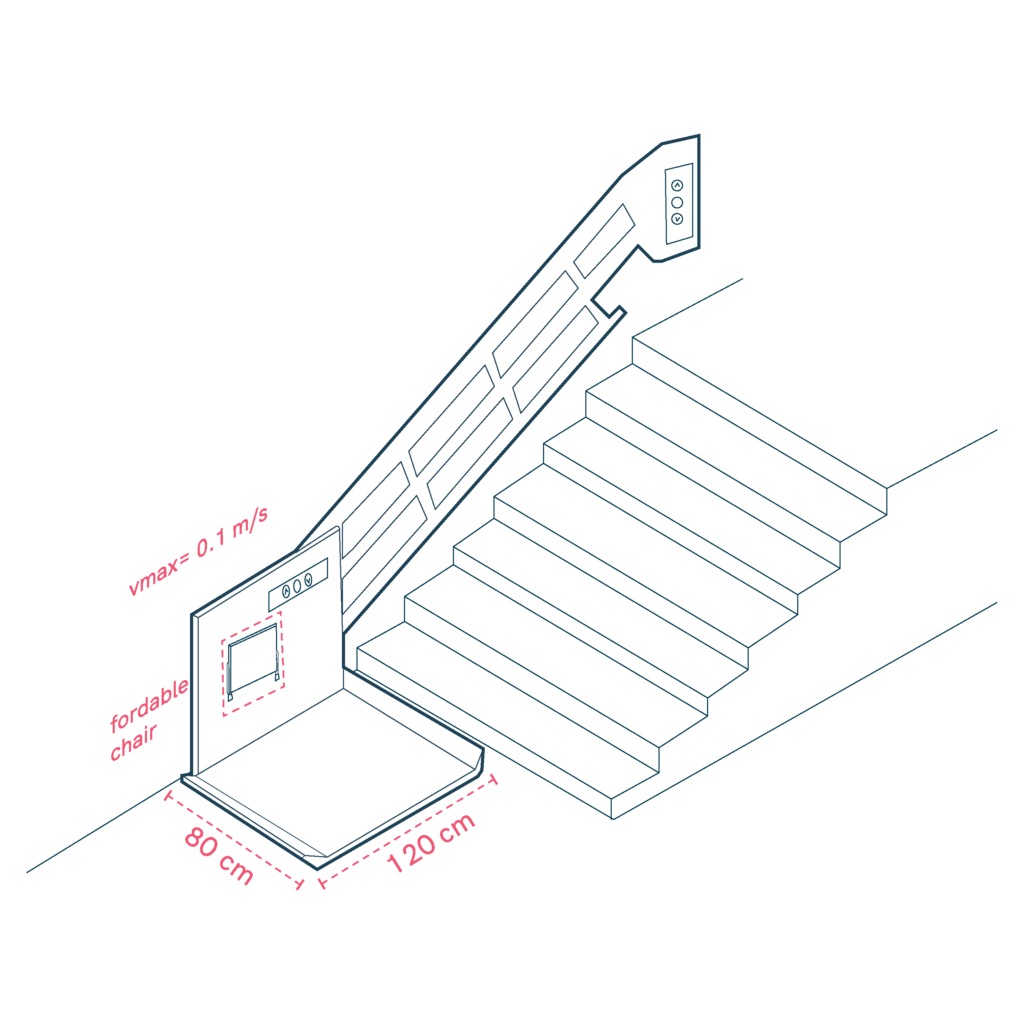Stair Lift Platform
Platform lifts provide a versatile and space-efficient solution for accessibility, particularly in environments with limited space or uneven surfaces. With dimensions of at least 70 cm x 110 cm and non-slip flooring, these lifts are equipped with safety features such as protective bars, foldable ramps, and anti-crush mechanisms. Their flexible design, with hydraulic or mechanical systems, ensures smooth access for all users, while constant pressure controls offer ease of use.

- Designed for safe and accessible boarding and alighting.
- Minimum platform size: 70 cm x 110 cm, with a foldable access ramp and protective bars.
- Non-slip flooring securely fixed for stability.
- Optional foldable seat for users with mobility difficulties.
- Platform folds against the wall when not in use while remaining operational.
- Maximum rail slope of 40°, securely anchored and protected from indirect contact.
- Control voltage limited to 24V, with a load capacity between 225 and 350 daN, clearly indicated.
- Hydraulic system for straight paths; mechanical system for inclines, turns, and speed adjustments.
- Constant pressure controls positioned at 70–75 cm, accessible from a wheelchair.
- Call and resend stations installed at each floor for convenience.
- Electromagnetic brake ensures a smooth stop, with manual operation available during power failures.
- Safety features include anti-shear and anti-crush devices under the platform.
- Equipped with an emergency stop button for added security.
- Minimum stair width: 105 cm in homes, 120 cm on landings, and 210 cm in public spaces.
- Where possible, separate circulation paths for platform users and pedestrians.
- Boarding areas designed to allow smooth access and maneuvering.
Sources
- https://accessible-eu-centre.ec.europa.eu/content-corner/digital-library/en-172102021-accessibility-and-usability-built-environment-functional-requirements_en
- https://www.access-board.gov/adaag-1991-2002.html#2.%20GENERAL
- https://universaldesign.ie/built-environment/building-for-everyone/building-for-everyone-full-series
- https://www.codigotecnico.org/pdf/Documentos/SUA/DccSUA.pdf
- Carers
- Children
- Cognitive
- Cognitive abilities
- Decolonial perspective
- Digital
- Digital barrier
- Enviroment
- Environmental
- Gender and generations
- Gender perspective
- Hearing impairment
- Low-education
- Low-income
- Older people
- Other
- Physical abilities and features
- Sensory and Physical
- Socioeconomic
- Visual impairment